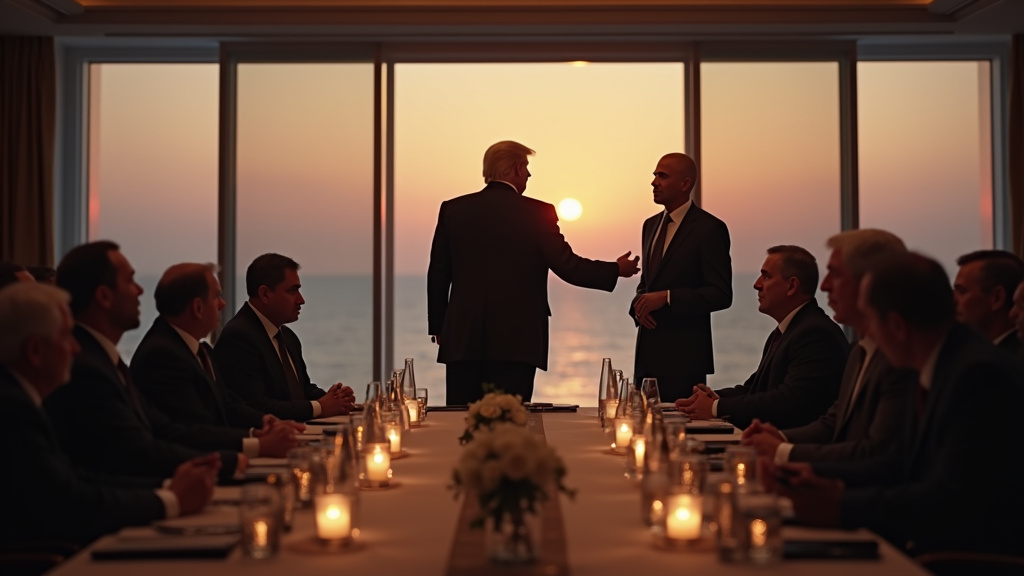Washington D.C. — U.S. President Donald Trump on Monday, June 23, 2025, announced via social media that a “complete and total ceasefire” had been agreed upon by Israel and Iran, a development he framed as the conclusion of the “12 day war” between the regional adversaries.
President Trump linked the purported ceasefire directly to a strategic decision he made recently: ordering a U.S. airstrike on three Iranian nuclear sites. This strike was carried out on Sunday, June 22, 2025, escalating already fraught tensions in the Middle East.
Escalation and Retaliation
The U.S. strike on Iranian nuclear facilities prompted a swift and forceful response from Tehran. On Monday evening, June 23, 2025, Iran’s armed forces launched missile attacks targeting two key locations housing U.S. personnel and interests: the al-Udeid Air Base in Qatar and bases in Iraq. These actions marked a significant direct military exchange following the U.S. pre-emptive strike.
Authorities in Qatar reported that the incoming missiles targeting al-Udeid Air Base were successfully intercepted, resulting in no reported casualties at the facility. Details regarding the outcome of the strikes on bases in Iraq were not immediately available.
Iran characterized its missile attacks as a direct response to what it termed “blatant military aggression by the criminal regime of the United States” against its sovereign territory and vital nuclear facilities. The Islamic Republic stated unequivocally that it would not allow violations of its territory to go unanswered, signaling a readiness to retaliate against perceived threats.
The Claimed Ceasefire
President Trump’s announcement of a ceasefire introduced a new, potentially de-escalatory element into the rapidly unfolding situation. His framing of the “12 day war” and its conclusion through this alleged agreement sought to portray his administration’s actions, including the Sunday airstrike, as leading to a resolution.
However, at the time the report emerged, there was no immediate confirmation or details regarding the ceasefire terms from either the government of Israel or the Islamic Republic of Iran. The lack of independent verification from both parties central to the alleged agreement raised questions among international observers and highlighted the uncertainty surrounding the validity and terms of the purported ceasefire.
Journalistic principles dictate that major announcements, especially concerning international peace and security, require confirmation from all involved parties to be substantiated. The absence of such confirmation from Jerusalem and Tehran meant President Trump’s social media declaration, while significant, remained an unverified claim requiring further scrutiny.
Regional Implications and Uncertainty
The sequence of events – a U.S. strike on nuclear sites, direct Iranian missile retaliation on U.S. bases, and a subsequent U.S. presidential declaration of a ceasefire – underscored the volatile nature of relations in the Middle East. The al-Udeid Air Base in Qatar is a critical hub for U.S. military operations in the region, making it a high-profile target for Iranian retaliation. Attacks on bases in Iraq further highlight the complex geopolitical landscape and the presence of various state and non-state actors.
Regional analysts noted that any genuine ceasefire between Iran and Israel, two nations fundamentally opposed and engaged in a long-standing shadow conflict, would be a monumental development. However, the absence of confirmation from both capitals suggested caution was warranted in accepting the U.S. president’s announcement at face value. The specifics of what a “complete and total ceasefire” would entail, including geographic scope, duration, and verification mechanisms, remained entirely unknown.
The international community watched closely for official statements from Iran and Israel that might corroborate President Trump’s claim or offer a different perspective on the state of hostilities. The incident underscored the need for clear, multi-party communication during periods of heightened military tension to avoid miscalculation and further conflict.
The situation remains fluid, with the focus now shifting to official responses from Tehran and Jerusalem to ascertain the true status of a potential de-escalation agreement following the recent exchange of military actions.





